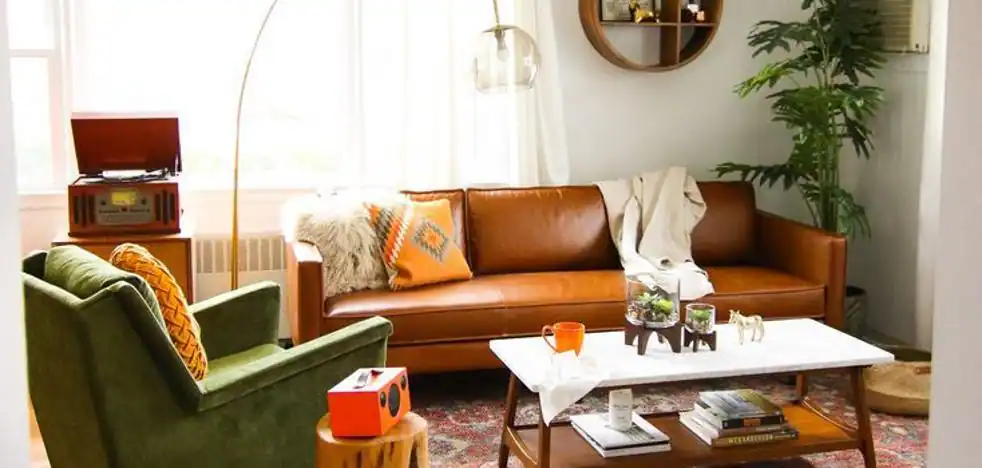The Influence of Mid-Century Style: From Mad Men to Modern Living

Introduction
When we think of Mid-Century style, images of “Mad Men,” the iconic TV series set in a 1950s and 1960s Madison Avenue advertising agency, often come to mind. The warm palette of office furniture, characterized by a significant presence of wooden textures and sleek lines, defined the visual universe created by set designer Claudette Didul. Similarly, “Frasier,” the beloved sitcom from the 1990s, showcased Mid-Century design in the apartment of psychiatrist Frasier Crane, featuring iconic pieces like the Eames lounge chair. Even in contemporary television, as seen in the second season of “And Just Like That…,” conflicts arise between characters in a vintage decor store, surrounded by Mid-Century style Italian glassware.
The Mid-Century Aesthetic in High Society
It’s no coincidence that these characters inhabit or work in environments frequented by the upper classes, where Mid-Century aesthetics reign supreme in interior design. As real estate agent Monique Anton emphasizes in her podcast “Mid-Century Modernism with Monique,” for some, this trend transcends mere design and architecture, becoming “a way of thinking and being in the world.” The Mid-Century furniture and design, ranging from the mid-1940s to the late 1960s, and even its resurgence in the 1990s and beyond, is encoded with norms of good taste, aligned with the idea that less is more, both aesthetically and invariably.
The Contemporary Resurgence of Mid-Century Style
Publications and social media profiles dedicated to interior design abound with references to Mid-Century style, exemplified by the success of Instagram accounts like Mid-Century Home and the British real estate agency The Modern House. Current interior design trends are fascinated by the influence of Mid-Century style, characterized by wooden paneling, low-profile furniture, warm fabrics, and earthy tones. These trends reflect the enduring appeal of Mid-Century design, extending its influence into contemporary living spaces.
The European Origins of Mid-Century Style
Despite its association with American television, Mid-Century style originated in Europe in the mid-20th century. Influenced by European design movements and the Bauhaus School, Mid-Century design captivated a generation of American designers and architects seeking a post-World War II aesthetic. However, its roots lie primarily in Nordic countries.
Recognizing Mid-Century Style
Mid-Century furniture prioritizes functionality, with clean lines and minimal ornamentation. Attention to detail was paramount, with meticulous craftsmanship evident even in less visible areas of the pieces. Noble woods are a hallmark of Mid-Century furniture, meticulously crafted to create inviting and attractive designs. The emphasis on cozy spaces reflects a post-war desire for warmth and comfort, with materials, color palettes, and textures contributing to a sense of intimacy.
Objects of Desire
Mid-Century style is associated not only with a cozy home but also with a desire for connection with nature and a search for peace. This aspiration is reflected in the preference for Mid-Century objects today, which carry a deeper meaning beyond their aesthetic appeal. Mid-Century designers approached design as a problem-solving exercise, anticipating user needs and prioritizing functionality. Objects from this era tell stories of social mobility and aspiration, resonating with contemporary desires for comfort and distinction.
Conclusion
In a rapidly changing world, the timeless appeal of Mid-Century style endures, offering a blend of comfort, functionality, and elegance. As we navigate the complexities of modern life, the warmth and simplicity of Mid-Century design continue to captivate, reminding us of the enduring allure of timeless design.


